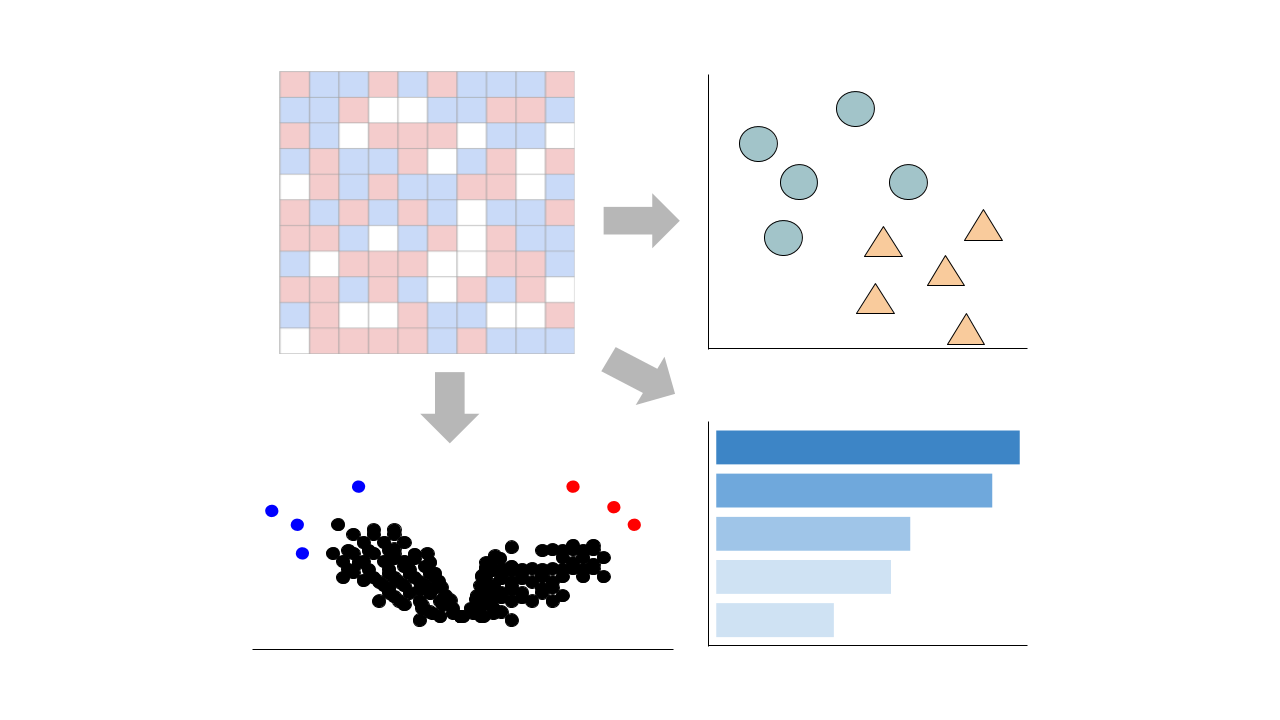 Gene counts are sourced from ARCHS4, which provides uniform alignment of GEO samples.
You can learn more about ARCHS4 and its pipeline here.
Gene counts are sourced from ARCHS4, which provides uniform alignment of GEO samples.
You can learn more about ARCHS4 and its pipeline here.
Select conditions below to toggle them from the plot:
| GROUP | CONDITION | SAMPLES |
|---|---|---|
| fibroblast |
GSM3440301 GSM3440302 GSM3440303
|
|
|
GSM3440295 GSM3440296 GSM3440297
|
||
|
GSM3440309 GSM3440310
|
||
|
GSM3440304 GSM3440305 GSM3440306
|
||
|
GSM3440298 GSM3440299 GSM3440300
|
||
|
GSM3440307 GSM3440308
|
Submission Date: Oct 22, 2018
Summary: A panel of human fibroblasts derived from patient samples (vulval, oral, cervical and breast carcinoma and metastatic melanoma) were seperated according to their ability to generate an aligned (anisotropic) or non-aligned extracellular matrix.
GEO Accession ID: GSE121632
PMID: 31659294
Submission Date: Oct 22, 2018
Summary: A panel of human fibroblasts derived from patient samples (vulval, oral, cervical and breast carcinoma and metastatic melanoma) were seperated according to their ability to generate an aligned (anisotropic) or non-aligned extracellular matrix.
GEO Accession ID: GSE121632
PMID: 31659294
Visualize Samples
 Visualizations are precomputed using the Python package scanpy on the top 5000 most variable genes.
Visualizations are precomputed using the Python package scanpy on the top 5000 most variable genes.
Precomputed Differential Gene Expression
 Differential expression signatures are automatically computed using the limma R package.
More options for differential expression are available to compute below.
Differential expression signatures are automatically computed using the limma R package.
More options for differential expression are available to compute below.
Signatures:
Select conditions:
Control Condition
Perturbation Condition
Only conditions with at least 1 replicate are available to select
 Differential expression signatures can be computed using DESeq2 or characteristic direction.
Differential expression signatures can be computed using DESeq2 or characteristic direction.
This pipeline enables you to analyze and visualize your bulk RNA sequencing datasets with an array of downstream analysis and visualization tools. The pipeline includes: PCA analysis, Clustergrammer interactive heatmap, library size analysis, differential gene expression analysis, enrichment analysis, and L1000 small molecule search.

 Chatbot
Chatbot Single Gene Queries
Single Gene Queries
 Gene Set Queries
Gene Set Queries
 Bulk Studies
Bulk Studies
 Single Cell Studies
Single Cell Studies
 Hypotheses
Hypotheses
 Resources
Resources
 Contribute
Contribute
 Downloads
Downloads About
About
 Help
Help